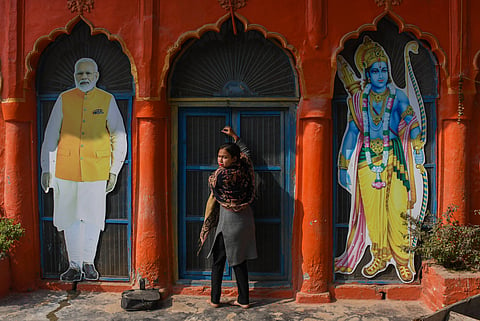A local temple in Ayodhya with cutouts of Ram and Narendra Modi. Modi’s inauguration of the Ram Mandir on the site of Ayodhya’s demolished Babri Masjid represented a brazen fusion of religious and political power that once felt unthinkable in an avowedly secular India. Photo courtesy: IMAGO / SOPA Images
Politics
The Ram Mandir is the tombstone for India as Southasia’s great secular exception
Many in Southasia earlier saw Indian secularism as an example for their own countries – but Narendra Modi’s mixing of Hinduism and politics has crushed India’s singular standing
IN THE SPRING of 2009, as the Sri Lankan Civil War was entering its gruesome denouement, I travelled through the southern and central parts of the country with the journalist and cartoonist Gihan de Chickera.
The north of the country, the epicentre of the fighting, had been entirely closed off, and not just in terms of physical access; the warzone had also become an information black hole. Gihan would attempt to keep up with developments in the north by watching television news late into the night in our shared hotel rooms (this was before the age of smartphones). His watching sessions were an intense attempt at decoding the narratives on the television news, reading into the silences, absences and subtle hints.

